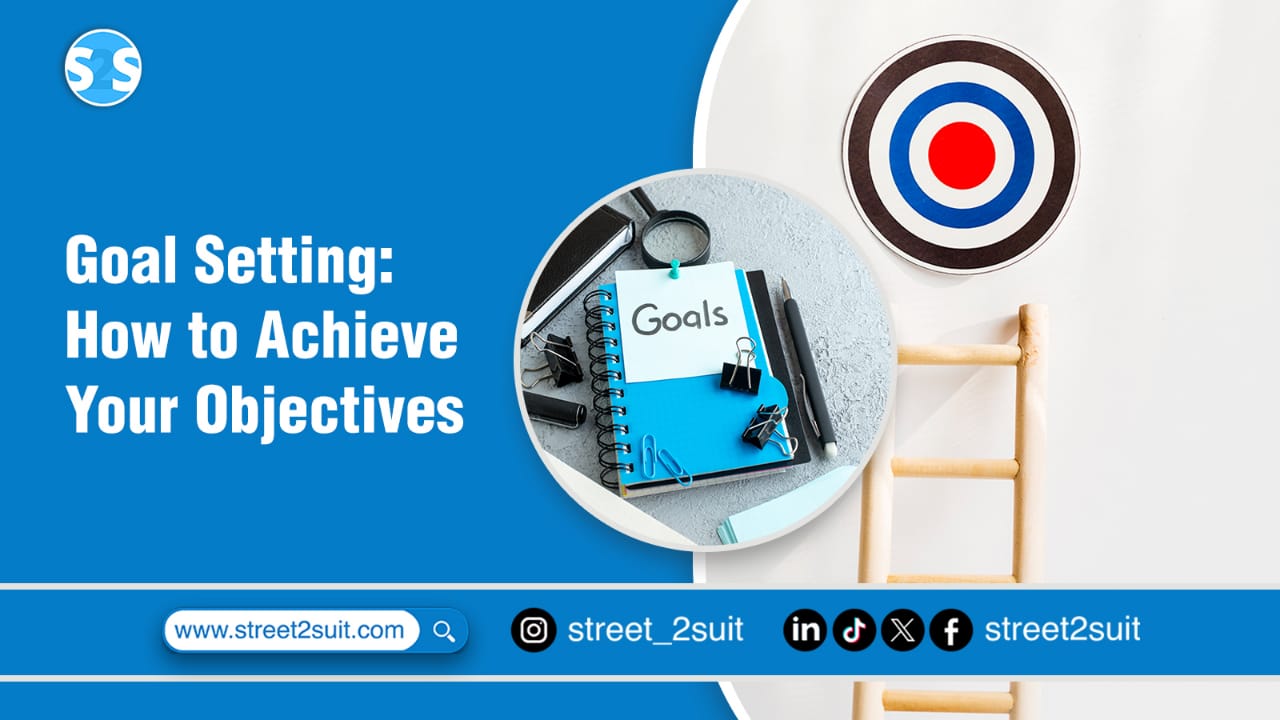Most of us have dreams. Big ones. We imagine landing that dream job, writing a book, running a business, or even just waking up earlier to build better routines. But here’s the hard truth: dreams stay dreams unless they’re turned into goals. And goals, without action, remain scribbles on paper or vague ideas floating in our heads.
Goal setting is the bridge between where you are and where you want to be. It’s not just about wishful thinking; it’s about clarity, structure, and consistent action. The problem? Many of us set goals, but few of us actually achieve them.
So how do you go from saying, “I want to” to proudly saying, “I did”? Let’s break down the process of setting goals that stick, and achieving them.
1. Get Clear on Your Why
Before you set any goal, ask yourself: Why do I want this? The “why” is your motivation. Without it, you’re likely to give up the moment things get tough. Want to lose weight? Why? To feel healthier? To play with your kids without getting tired? To regain your confidence? Want to start a business? Why? For financial freedom? For impact? For legacy? When your goals are tied to a deep, personal reason, you’re less likely to abandon them when your motivation wanes.
2. Turn Vague Dreams into Specific Goals
- “I want to be successful.”
- “I want to be rich.”
- “I want to be fit.”
These are nice dreams, but they’re too vague to act on. To turn them into goals, you need clarity. Instead of saying, “I want to be fit,” say: “I want to work out three times a week and lose 10 pounds in three months.” Instead of, “I want to save money,” say: “I’ll save $200 every month for the next year.” Specific goals give your brain a target. Without specificity, you’ll wander aimlessly.
3. Use the SMART Framework
You have probably heard of SMART goals. Specific, Measurable, Achievable, Relevant, Time-bound. It’s a solid framework, but here’s the catch: if you make your goals sound like robotic checklists, you’ll lose interest quickly.
So yes, make your goals SMART, but also make them inspiring. For example:
- SMART: “I want to complete a professional course in six months.”
- Inspiring SMART: “By June, I’ll complete my professional course so I can confidently apply for higher-paying jobs.”
See the difference? One is a checklist; the other paints a picture of the outcome and provides motivation to keep going.
4. Break Big Goals into Small Steps
Here’s where most people stumble: they set goals that are so big they feel impossible. Imagine trying to climb a mountain in one giant leap—you’d fail. But tackle it one step at a time? That’s how it’s done.
Take your goal and break it down:
- Big Goal: Write a book.
- Smaller Steps: Outline chapters → Write 500 words daily → Revise one chapter a week.
- Big Goal: Launch a business.
- Smaller Steps: Research the market → Build a business plan → Test the product → Register officially → Start marketing.
Small wins build momentum, and momentum fuels resilience.
5. Write It Down and Track Progress
A goal in your head is a wish. A goal on paper (or in a digital planner) is a commitment. Studies show that people who write down their goals are far more likely to achieve them. Track your progress too. Whether it’s ticking off a checklist, journaling, or using apps like Notion or Trello, seeing progress keeps motivation alive. Remember: what gets measured gets managed.
6. Build Systems, Not Just Willpower
Motivation is fickle. Some days you feel unstoppable; other days, you feel like doing nothing. That’s normal. The secret is not to rely solely on motivation but to build systems.
For example:
- Instead of saying, “I’ll read more this year,” create a routine: set a daily 20-minute reading session after dinner.
- Instead of, “I’ll save money,” automate $100 from your account every payday.
Systems make progress automatic, they carry you through when willpower runs dry.
7. Anticipate Obstacles
Too many people quit when things get hard because they didn’t plan for challenges. But obstacles are inevitable.
Ask yourself:
- What could get in the way?
- How will I respond?
If you plan to wake up early to study but know you’re a night owl, perhaps the better strategy is to sleep earlier instead of relying on a 5 a.m. alarm. If you know you’ll be tempted to spend money, consider opening a savings account that’s harder to withdraw from. Resilience isn’t about avoiding setbacks; it’s about preparing for them.
8. Find Accountability
It’s easier to quit when no one knows about your goals. Accountability changes that. Share your goal with a trusted friend, join a study group, or hire a coach. Even posting your progress on social media can help. Accountability adds a constructive pressure that keeps you moving forward. Remember, growth loves company.
9. Celebrate Small Wins
Many people tend to wait until a significant goal is accomplished before celebrating. However, by that time, we often feel exhausted or already focused on the next objective. Celebrating small wins boosts motivation. Did you finish a chapter? Treat yourself to something small. Did you save your first $500? Celebrate that achievement. Have you consistently worked out for two weeks? Celebrate it!
Recognizing your progress keeps your energy high and makes the journey enjoyable.
10. Stay Flexible
Life can be unpredictable. Sometimes, you’ll need to adjust deadlines, modify strategies, or even shift priorities. This doesn’t mean you’ve failed; it means you’re adapting. A rigid plan will break when challenges arise, while a flexible one can bend and adjust. Resilience and flexibility go hand in hand. If you miss a milestone, don’t give up. Instead, ask yourself: What can I do differently moving forward?
11. Visualize the End Result
Visualization is a powerful tool. Athletes use it before competitions, leaders use it before important speeches, and you can use it to achieve your goals.
Take a few minutes each day to envision what success looks and feels like for you:
- How will life change once you achieve this goal?
- How will you feel?
- What opportunities will it bring?
Visualization trains your brain to believe that your goal is achievable—and belief is half the battle.
12. Keep the Long Game in Mind
Some goals are sprints, while others are marathons. Regardless, growth takes time. The key is consistency, not speed. Consider bamboo: it spends years developing roots underground before eventually shooting up rapidly. Your goals may seem invisible for a while, but that hidden work is laying the foundation for success.Stay patient. Stay consistent. The results will come.
Conclusion
Goal setting isn’t merely about creating a long to-do list; it’s about intentionally designing your life. It involves clarity, structure, and discipline, complemented by opportunity. When you set meaningful goals, break them into manageable steps, anticipate challenges, and remain consistent, you transform vague dreams into tangible achievements. So here’s the question: What’s one goal you can start working on today? Write it down, break it into steps, and commit to the process. Because the truth is, you don’t rise to the level of your dreams; you rise to the level of your goals.
Receive the latest job and career updates in your inbox, every week!



